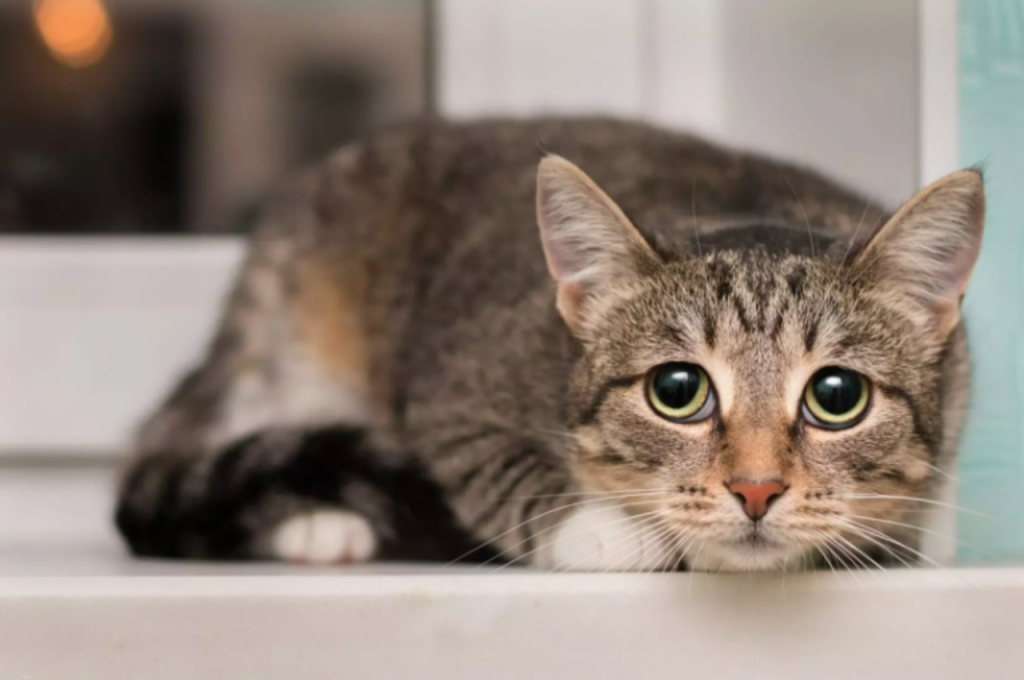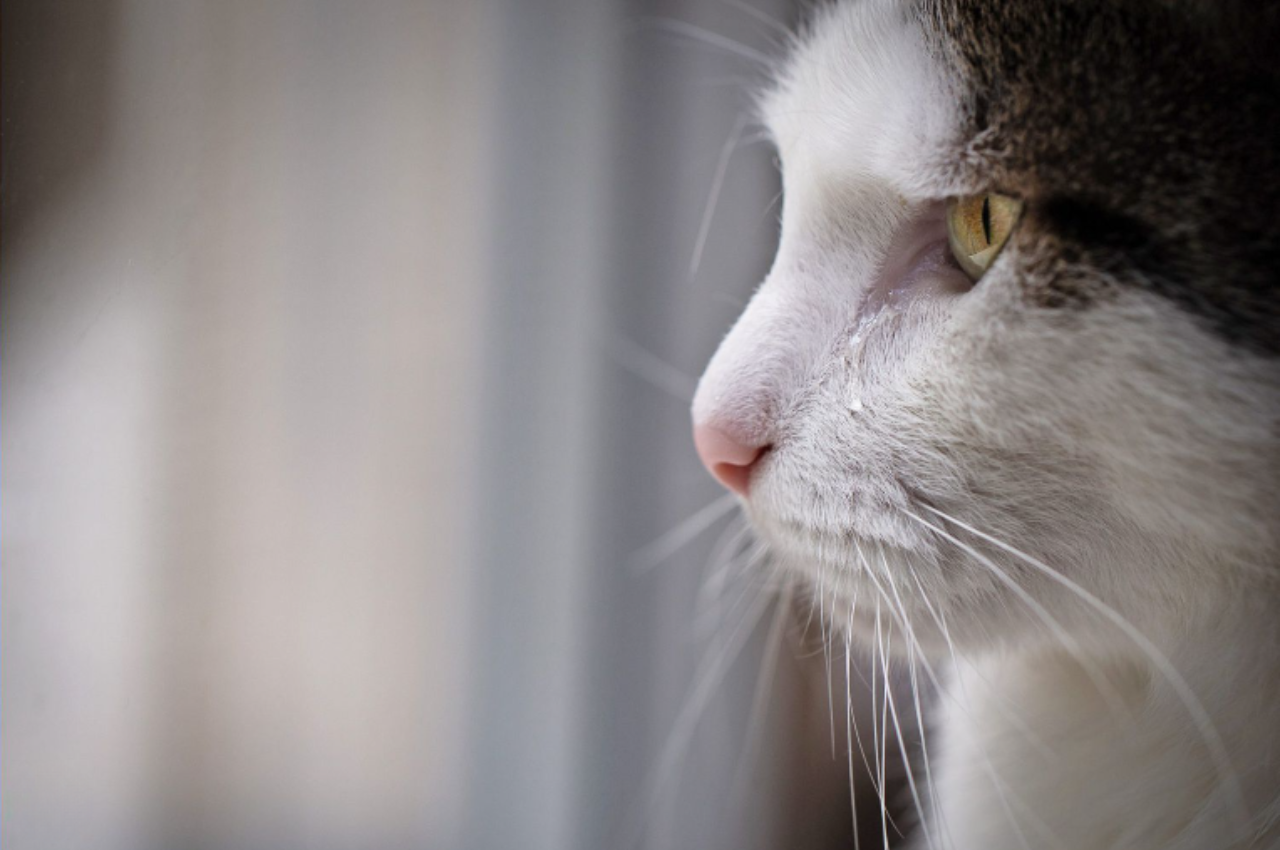Cats cannot cry tears as humans do, but they can show signs of distress through vocalizations and body language. Cats are fascinating creatures that have captivated humans for centuries with their mysterious and often unpredictable behavior.
One common question that often arises is whether or not cats can cry. The short answer is no, cats cannot shed emotional tears like humans do. However, this does not mean that cats are incapable of expressing their emotions. Just like humans, cats have their unique ways of communicating their feelings.
We will explore the topic of whether cats can cry, and delve into the various ways in which cats express their emotions through vocalizations and body language. So, if you’re curious about whether cats can shed tears, keep reading to find out more!
Understanding Feline Emotions
Before addressing the question of whether cats can cry, it’s essential to understand the spectrum of emotions experienced by these complex creatures. While cats may not express emotions in the same way humans do, they are capable of experiencing a wide range of feelings, including happiness, fear, anxiety, sadness, and affection.

Body Language
Cats communicate their emotions primarily through body language. Purring, kneading, rubbing against their owners, and tail movements are just a few ways cats express contentment and affection. Conversely, flattened ears, dilated pupils, and hissing may indicate fear, aggression, or discomfort.
Social Behavior
Cats are social animals that form strong bonds with their human caregivers and other animals. Seeking physical contact, grooming, and playing are ways cats express affection and strengthen social bonds.
Vocalizations
Cats use vocalizations to communicate with humans and other animals. Meowing, purring, chirping, and yowling are common vocalizations that cats use to convey their emotions.
Can Cats Cry?
Have you ever wondered if cats cry tears like humans do? Cats are known for their mysterious and enigmatic behavior, and their emotional expressions can sometimes be hard to decipher. In this blog post, we will explore the topic of whether cats can cry and uncover the underlying facts behind their tear production and emotional cues.
Tear Production in Cats
Cats indeed produce tears, but not always for emotional reasons. The tear production in cats serves a different purpose compared to humans. While our tears primarily function to display sadness or happiness, cats’ tears play a crucial role in maintaining eye health.
The lacrimal glands in a cat’s eyes produce tears to keep the eyes lubricated and free from irritants, just as oil keeps a machine functioning smoothly. When a cat’s eyes get dry or are exposed to foreign substances, such as dust or debris, the tears act as a natural defense mechanism to flush out these irritants and keep the eyes clean and moisturized.
Therefore, if you notice your cat’s eyes watering, it is likely an indication of some sort of eye irritation or discomfort rather than an emotional response. It’s essential to monitor your cat’s eyes and seek veterinary attention if you observe any prolonged or excessive tearing, as it could be a sign of an underlying eye problem.
Emotional Cues in Cats
While cats may not cry tears in response to emotions like humans do, they do express their feelings in other ways. Cats have a unique set of behavioral cues that they use to communicate their emotions to their human companions.
One common emotional cue cats use is their body language. Paying close attention to your cat’s posture, tail movements, and ear positions can give you insights into their current emotional state. A relaxed and open posture usually indicates contentment, while an arched back, hissing, or raised fur can signify fear or aggression.
Vocalizations also play a vital role in a cat’s emotional expression. Cats meow, purr, growl, or hiss to convey different emotions such as hunger, happiness, annoyance, or distress. By understanding the specific vocalizations your cat makes, you can develop a better understanding of their needs and emotions.
It’s important to remember that every cat is unique, and they may display emotional cues differently. By closely observing your cat’s behavior and learning to interpret their cues, you can create a stronger bond and provide the care and support they need.
Exploring Feline Emotions
Cats are fascinating creatures with intricate personalities and a rich emotional life. While they may not express emotions in the same way humans do, cats experience a wide range of feelings that influence their behavior and interactions with their environment. In this article, we’ll embark on a journey to explore the complex world of feline emotions, shedding light on how cats express and experience different feelings.

The Range of Feline Emotions
Cats experience a spectrum of emotions, from joy to despair, just like humans. These emotions can be influenced by various factors such as their environment, interactions with humans and other animals, health status, and past experiences.
Understanding and acknowledging the emotional depth of cats is crucial for fostering strong bonds with them and providing them with the care and support they need for their overall well-being.
Common Signs of Happiness in Cats
- Purring and kneading behavior indicate contentment.
- Relaxed body posture and slow blinking are signs of a happy kitty.
Indications of Fear or Anxiety in Cats
- Hiding, excessive grooming, and dilated pupils can signal fear.
- Restlessness, aggression, and excessive meowing indicate anxiety.
Understanding Feline Loneliness
Cats may feel lonely due to changes in their routine or environment, seeking attention or companionship.
Recognizing Signs of Stress in Cats
- Excessive hiding, avoidance of food, or over-grooming may signify stress.
- Urinating outside the litter box and increased vocalization are also common stress indicators.
Frequently Asked Questions of Can Cats Cry?
Certainly! Here are some questions about can cats cry:
Can cats produce tears like humans do?
Yes, cats can produce tears but not necessarily due to emotions. Cats produce tears to lubricate their eyes and remove irritants.
Why do cats seem to cry without tears?
Cats don’t cry emotional tears like humans. The watery discharge from a cat’s eyes can be due to allergies, infections, or eye irritants.
Do cats cry for attention or manipulative purposes?
Cats don’t cry for attention like humans do. They may vocalize or meow for various reasons, such as hunger, playfulness, or discomfort.
Conclusion
Can cats cry? While cats don’t shed tears like humans, they exhibit emotional distress through body language and vocalizations. Understanding feline behavior is key to recognizing their emotional needs. By observing and responding to their cues, we can strengthen the bond with our feline companions.
Remember, being attuned to your cat’s emotions is vital for their well-being.
